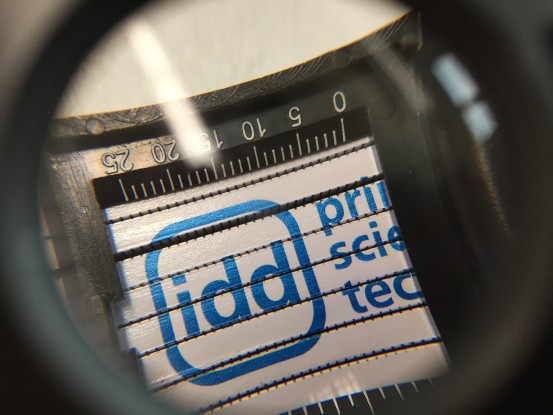Build-up and printability of aptamer-based biosensors for the detection of antibiotic contamination with gold nanoparticles for visible evaluation
In animal fattening, antibiotics are not only used to treat diseases. Subtherapeutic amounts of antibiotics are also regularly administered to fattening animals in order to increase the yield of muscle meat. This leaves antibiotic residues in animal products, such as milk, which are eaten by consumers. This leads to a permanent antibiotic burden on the population and promotes the development of multi-resistant germs. As a result, society is burdened not only by increased morbidity and mortality, but also by increased costs in the healthcare system. In the EU, depending on the antibiotic, animal and product, certain maximum residue limits are prescribed. In order to comply with these limits, samples must be checked regularly. Conventional detection methods currently require complicated laboratory equipment, complex sample preparation and trained personnel. An alternative to this are biosensors, which have so far been researched primarily on the basis of rapid tests. These are often antibody-based rapid tests. However, antibodies have a number of disadvantages, such as low stability and high sensitivity to sub-optimal pH value and temperature. An alternative are RNA aptamers, which are able to bind target molecules such as antibiotics due to their defined structure with a high affinity and specificity. Aptamer-based biosensors are mainly investigated as assays in laboratories, but their detector systems are unique and difficult to transfer. The aim of this project is to develop a universal detection method based on aptamers in order to control compliance with maximum residue levels of antibiotic residues in food. The detection is to be carried out using a test strip, which provides rapid results and is inexpensive to produce. In addition, it can be used anywhere and by anyone. This is to be achieved through close interdisciplinary cooperation between biology and printing technology. As part of this project, a detector system will be developed at AG Suess which is composed of aptamers and gold nanoparticles and can be used for highly specific detection of antibiotic contaminations. The gold nanoparticles enable simple detection of the ligand by an optically visible color change. In the AG Dörsam, this detection system will be printed on storable test strips. The visual evaluation and evaluation with simple devices will be established. The universal design should make it possible to easily transfer the detector system to other aptamers. In this way, the printing process to be developed could form the basis for other rapid tests, which were previously based on laboratory assays. This can therefore form the basis for the widespread use of the method developed here.
This project is funded by the Deutsche Forschungsgemeinschaft DFG.



